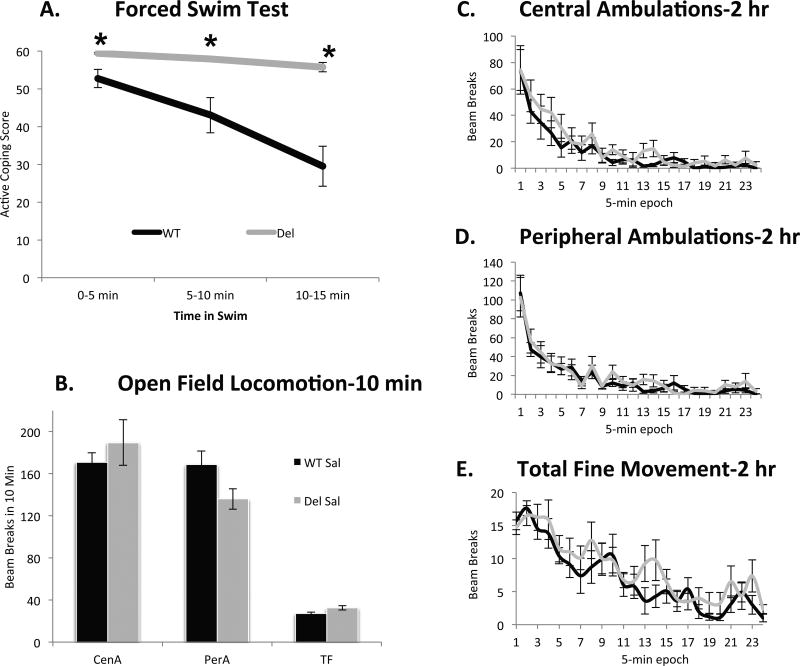Figure 1.
A. Del mice begin the forced swim test with more active coping and perseverate with that strategy throughout the test while their WT sibling controls progressively adopt more passive coping strategies. At the 1st time-point, p = .003, at 2nd p <.002 and at 3rd p < .001. Group size, WT, n = 19 mice (10 male, 9 female); del, n = 16 mice (8 male, 8 female). B. In a 10 min open field test, there is no significant effect of genotype on central ambulations (CenA) perhipheral ambulations (PerA) or total fine movement (TF). Group size, WT, n = 19 mice (10 male, 9 female); del, n = 16 mice (8 male, 8 female). C. D. and E. In a separate cohort of mice examined for 2 hours, differences between genotypes in locomotor behavior were not statistically detectable and both genotypes showed a similar gradual reduction in locomotion. C. For central ambulations p = 0.393, D. peripheral ambulations p = .363, and E. total fine movement p = .662). Group size, WT, n = 10 mice (5 male, 5 female); del, n = 8 mice (4 male, 4 female).

